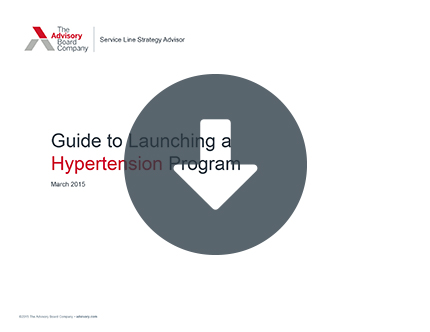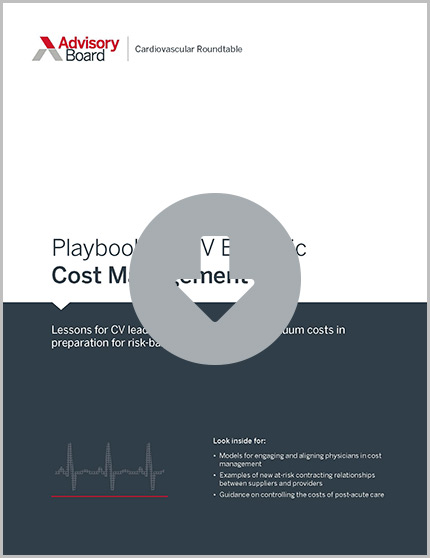Auto logout in seconds.
Continue LogoutMany physicians skip necessary steps to properly measure their patients' blood pressure, even though accurate readings play a crucial role in identifying and treating patients with high blood pressure, Dylan Collins writes for Vox.
Webconference tomorrow: How to take CV care variation reduction from theory to practice
Collins notes that accurate blood pressure readings are essential for patients' health. He writes, "[S]tubbornly high blood pressure becomes dangerous because it can cause arteries to burst, get inflamed, or clog, leading to diseases like heart attacks, strokes, and heart failure."
To get an accurate reading, experts recommend that providers:
- Ensure there are no clothes on a patient's arm;
- Hold a patient's arm at the level of his or her heart;
- Place cuffs on the appropriate location around a patient's arm; and
- Use a stethoscope to hear a patient's pulse.
However, Collins writes that health professionals are "notoriously bad" at following the recommended steps, which may result in inaccurate readings. He cites a 2005 study that found physicians overestimate their patients' blood pressure by about 10 mmHg when compared with nurses who are trained to follow those steps.
Paul Whelton, a professor at Tulane University who chairs the writing committee for the latest U.S. guidelines on blood pressure, said one primary reason physicians might be skipping some steps is because they are "stretched in many directions" and do not have an incentive to precisely measure a patient's blood pressure. He said, "I don't think there is anything malicious about it, but [doctors wrongly] assume, in many instances, they're doing a great job."
He added, "We wouldn't fly on a plane where the pilot said, 'I'm going to ignore the guidelines I have for safe travel'"—but that's how many health professionals treat blood pressure recommendations.
New guidelines
Earlier this year, the American Heart Association (AHA) and the American College of Cardiology (ACC), published new blood pressure guidelines that experts say could help the United States better identify and address hypertension.
The guidelines note that blood pressure readings can fluctuate significantly based on the time of day, one's level of physical activity immediately preceding a test, and other factors.
As a result, the new guidelines call on health care providers to measure a patient's blood pressure several times on multiple occasions to get an appropriate average. They also encourage providers and patients to embrace alternative forms of blood pressure measurement, such as automated devices that can be used outside of the doctor's office.
For blood pressure measurements conducted in a doctor's office, the guidelines detail a nearly 19-step checklist providers should follow when taking a patient's blood pressure, including:
- Encouraging the patient to avoid caffeine, exercise, and smoking for 30 minutes before the measurement;
- Directing the patient to use the bathroom before the reading;
Instructing the patient not to talk during the reading; and
- Seating the patient upright in a chair with their feet on the floor for five minutes before the measurement
A lesson learned from Canada
Experts say the new guidelines take the United States in the direction of Canada—which, Collins writes is now "recognized as the world leader in lowering blood pressure."
After decades of poor performance on blood pressure management, Canada adopted an approach the relied heavily on alternative forms of measurement, such as automated devices available outside a provider's office.
Nadia Khan, president of Hypertension Canada, the not-for-profit group that helped craft Canada's guidelines, said, "Out-of-office measures are much better at predicting future cardiovascular events than office blood pressures." She noted that with the new guidelines the United States is "moving closer to the Canadian approach" (Collins, Vox, 7/3).
Join tomorrow's webconference: Take CV care variation reduction from theory to practice
Join us tomorrow, July 10 at 1 pm ET to learn the critical steps to implementing a care variation reduction strategy, from setting standards to evaluating their success.
Don't miss out on the latest Advisory Board insights
Create your free account to access 1 resource, including the latest research and webinars.
Want access without creating an account?
You have 1 free members-only resource remaining this month.
1 free members-only resources remaining
1 free members-only resources remaining
You've reached your limit of free insights
Become a member to access all of Advisory Board's resources, events, and experts
Never miss out on the latest innovative health care content tailored to you.
Benefits include:
You've reached your limit of free insights
Become a member to access all of Advisory Board's resources, events, and experts
Never miss out on the latest innovative health care content tailored to you.
Benefits include:
This content is available through your Curated Research partnership with Advisory Board. Click on ‘view this resource’ to read the full piece
Email ask@advisory.com to learn more
Click on ‘Become a Member’ to learn about the benefits of a Full-Access partnership with Advisory Board
Never miss out on the latest innovative health care content tailored to you.
Benefits Include:
This is for members only. Learn more.
Click on ‘Become a Member’ to learn about the benefits of a Full-Access partnership with Advisory Board
Never miss out on the latest innovative health care content tailored to you.


